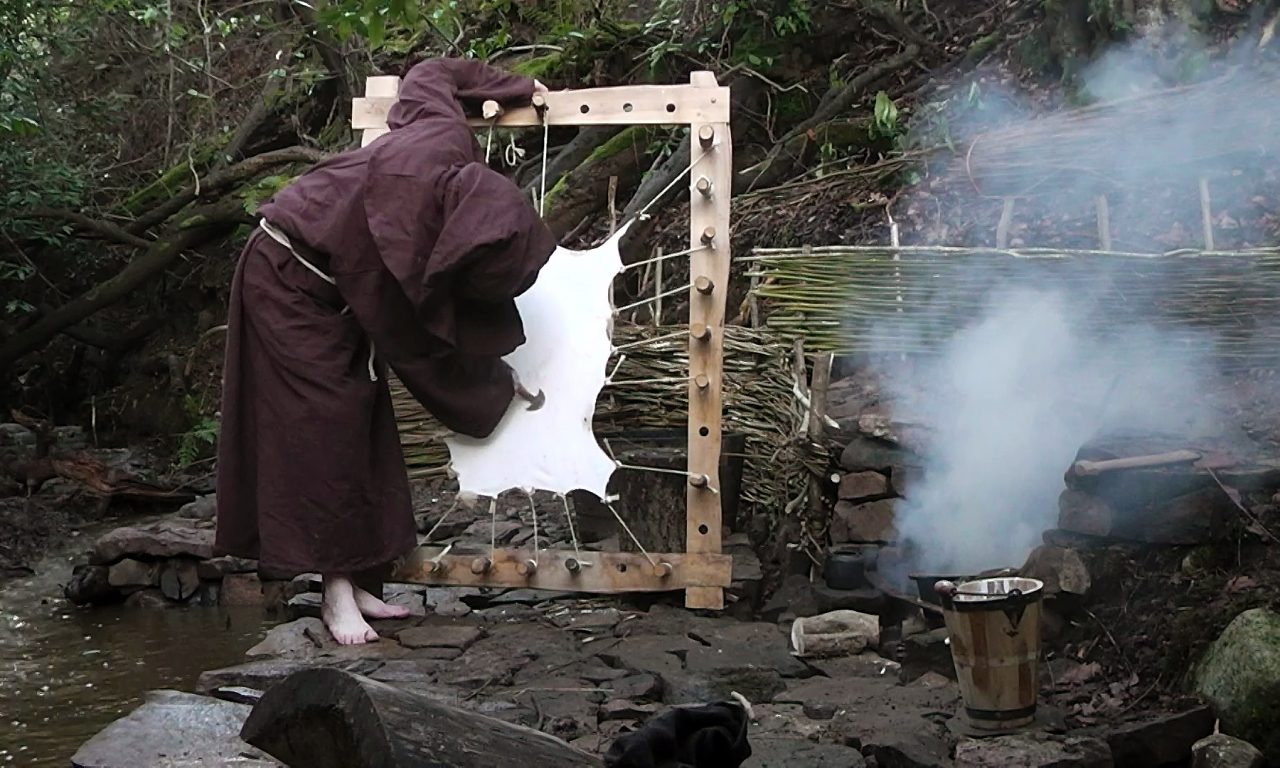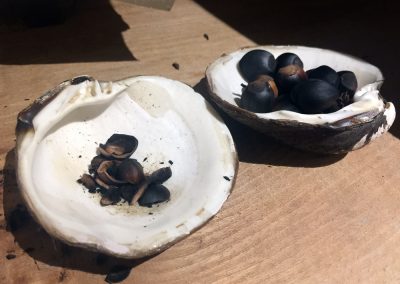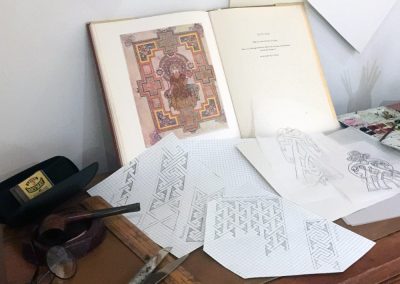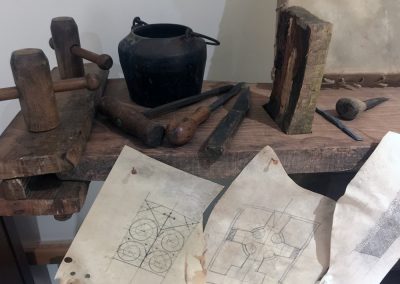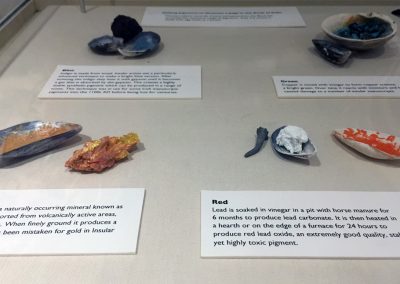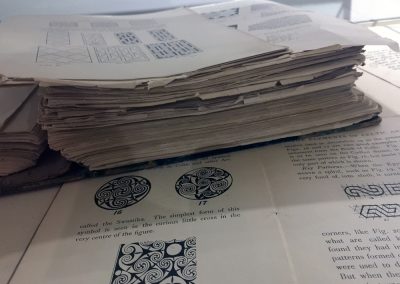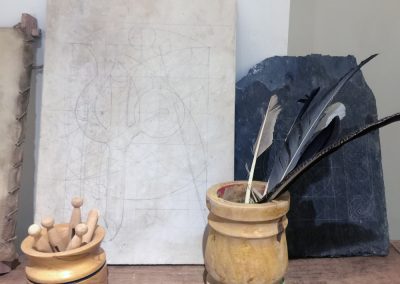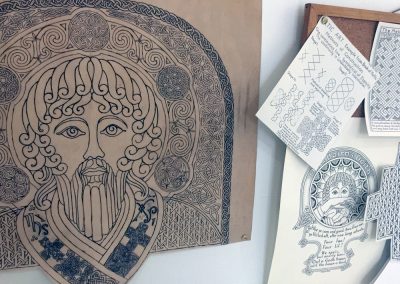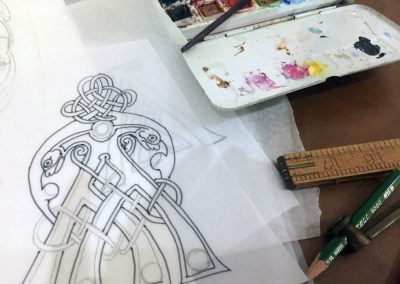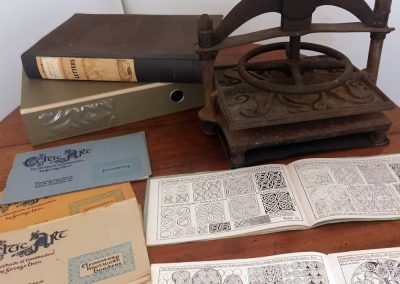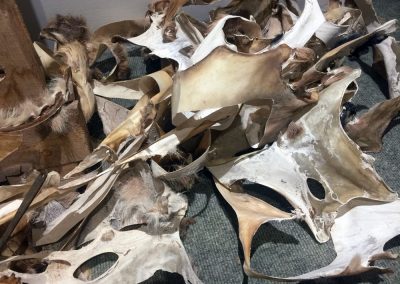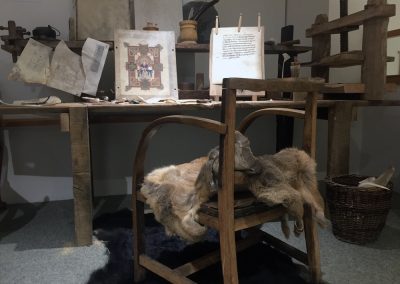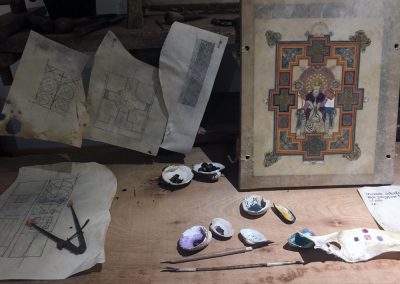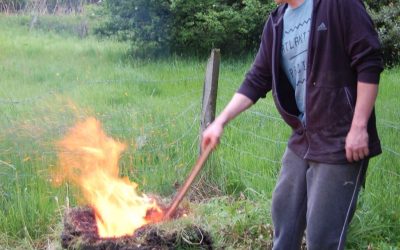EXHIBITION
THE BOOK OF KELLS
SOME MYSTERIES REVEALED
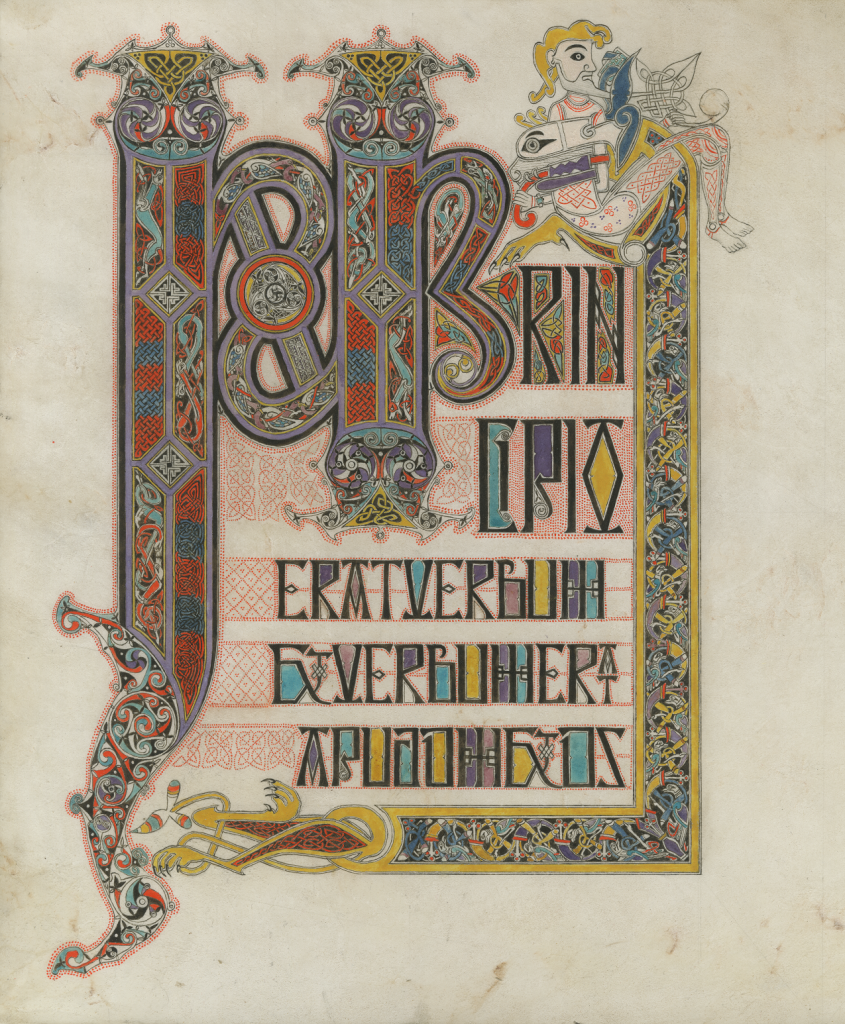
The Book of Kells is a sumptuous illuminated Book of Gospels, created at St Columba’s monastery on Iona around the 750s AD. It is inspirational from Christian, historic and artistic perspectives. This exhibition explores how it has inspired two specific artists and craftspeople: George Bain and Thomas Keyes. Both artists studied the St John’s Gospel page and the items on display explore this.
The exhibition also looks at the underlying principles of the geometry used. This was not just on parchment and paper but also in the designs on the Pictish cross-slab and other sculpture at Groam House Museum.
By comparing and contrasting the two men’s explorations of the Book of Kells we can see the inspiration they gained. Using the faithful recreation of a monk’s scriptorium and a 20th century artist’s work desk, visitors can immediately reflect on 1200 years of similarities and differences. The display focuses on materials and techniques used by both artists along side the final, wonderful pieces and insights that these two experts have produced. It’s a striking experience.
George Bain, working in the mid-1900s, was determined to unpack the intricate designs used on the decorative Gospel pages of the Book of Kells, as well as other sources, and share them with others. His archive is a nationally significant Recognised Collection cared for by Groam House Museum – see the museum’s website for more information.
Thomas Keyes, from Cromarty on the Black Isle, is fascinated by the art and craft techniques used by the monks over 1,200 years ago which he applies in his own work today. It is Thomas who has realised the significance of geometry during the creation of some of the museum’s Pictish stones. His videos are included in the exhibition and are fascinating – see scribalstyles.net
EXHIBITION TOUR
See both our exhibitions:
Pictish sculpture and Book of Kells – some mysteries revealed
PICTISH SCULPTURE: SOME MYSTERIES REVEALED
Pictish sculpture reveals incredible design skills. This specialist knowledge was also used when making gospel books and religious vessels for monasteries. All were made by hand by people living in, or working for, these Pictish centres.
Thomas Keyes is now studying these complex designs and the tools and materials the original artists used. He’s exploring the links between the illustrations in manuscripts and on sculpture. His current results are fascinating – take a look at his labels for our stones to find out more.
These sculpted stones show that craftsmen lived at Rosemarkie’s monastery, either permanently or temporarily. The geometry they used to design some of the stones matches that used in manuscripts like the Book of Kells.
So, what is the link between designs on Rosemarkie’s sculpture and in illuminated manuscripts produced in the 700s and 800s AD?
In this part of the exhibition we look at the formulas that were used to create the compositions. Rosemarkie demonstrates the significance of this accurate geometry. No other group of Pictish sculpture shows this so clearly.
GALLERY
ROSEMARKIE GOSPEL PARCHMENT PRINTS
‘You urge me to make a new work from the old’, was Jerome’s complaint in the year 376 to the request from Pope Damascus for him to create the Vulgate version of the Gospels which were to be the creative foundation of some of the greatest manuscript art. Jerome agreed...
Read: Making Manuscripts through a Pandemic, Again?
There isn’t a single fragment of any insular manuscript in Scotland and only one, the 10th century Book of Deer which has undisputed Scottish provenance. The Book of Kells comes in some way behind with a speculative theory for it to have been started on Iona in the...

